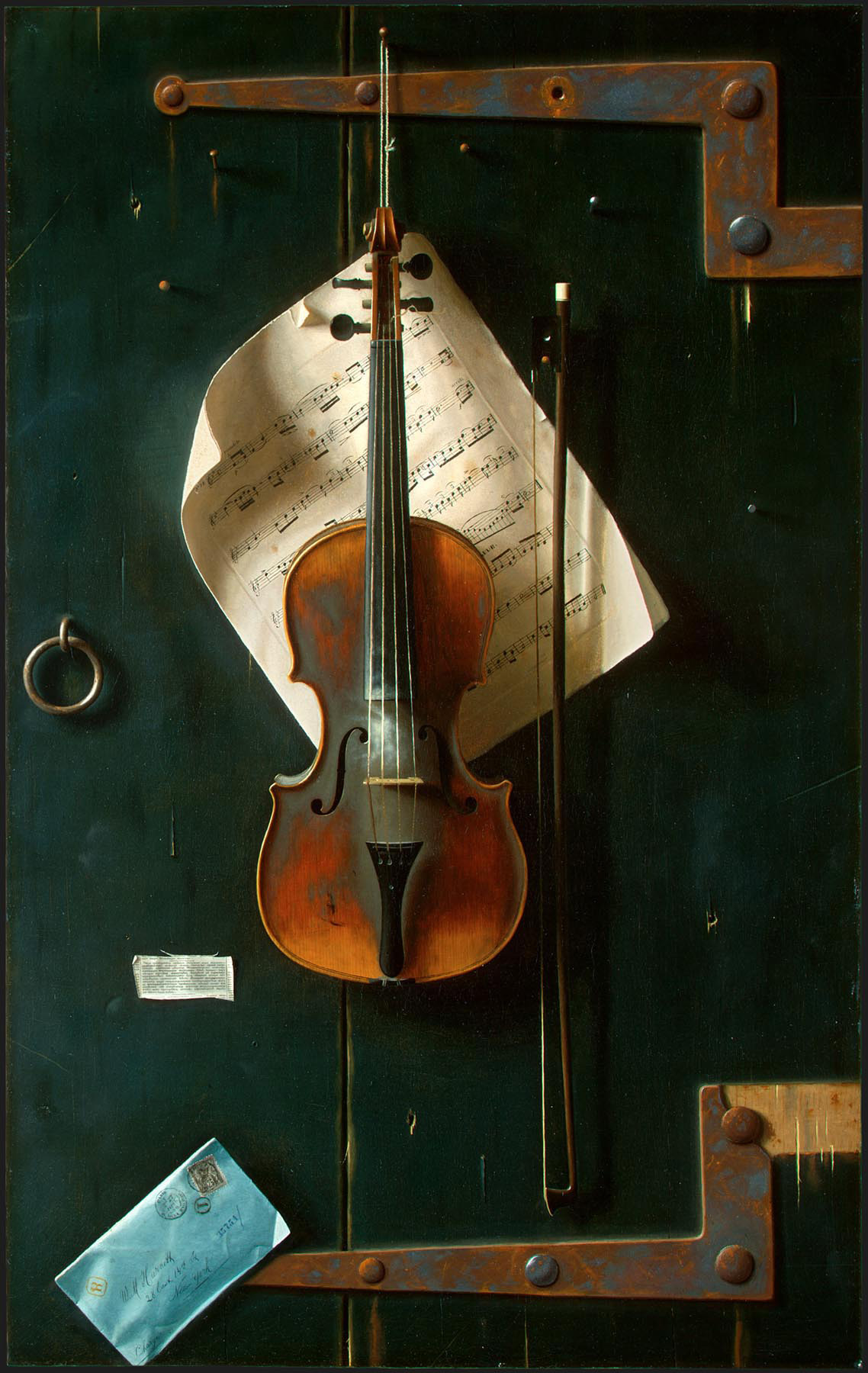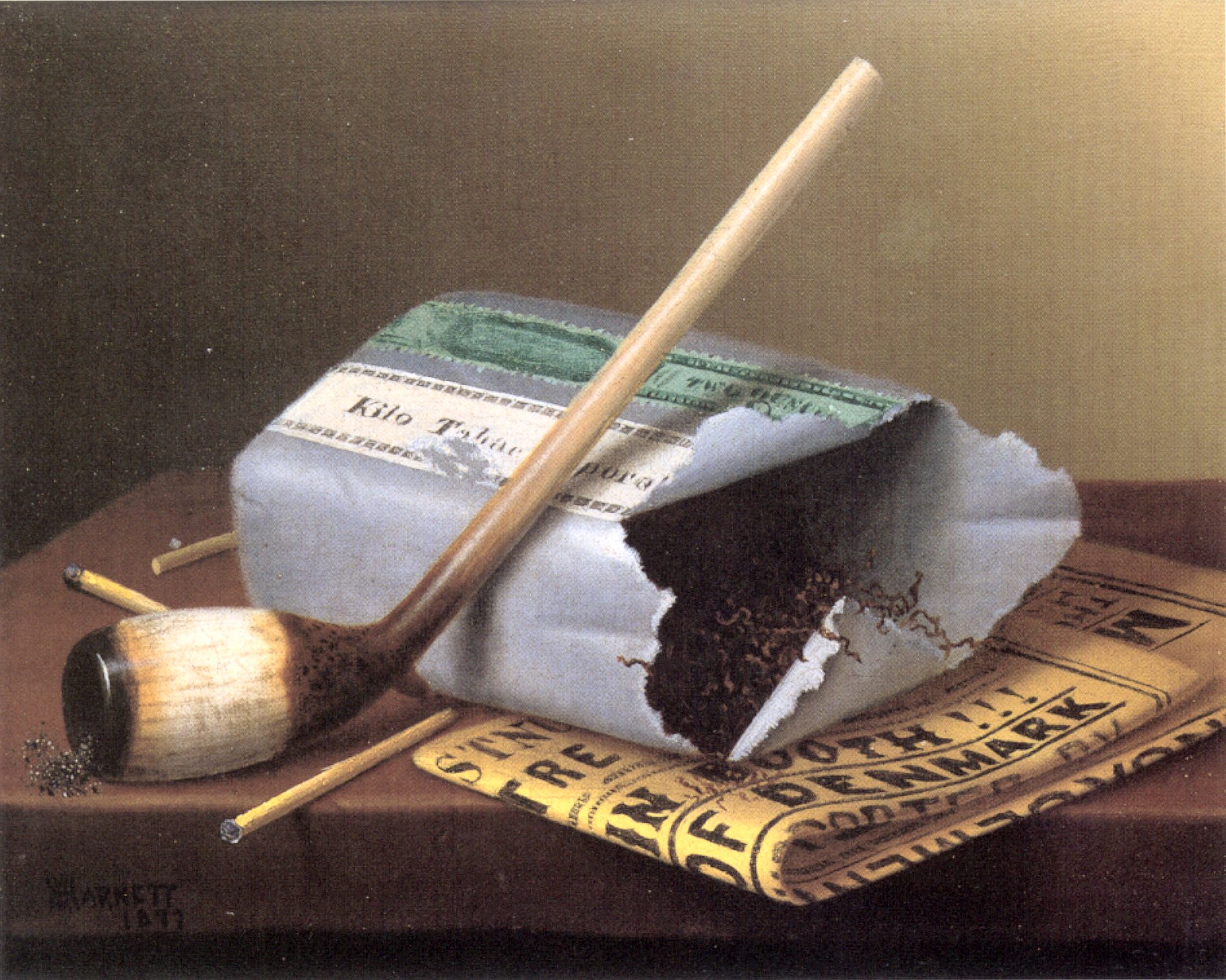It may seem surprising that a still life painting of a violin and bow could cause a riot, but that's what nearly happened when The Old Violin by William Harnett was exhibited at the Cincinnati Industrial Exposition in 1886. Harnett was a master of trompe l'oeil (French for "fool the eye"), a style of still-life painting in which ordinary objects are rendered with such exquisite realism that viewers are tricked into thinking the objects are real. Police were called to guard this painting, the most famous of Harnett's works, from fervent crowds who wanted to remove the violin and bow or grasp the envelope!
Harnett was born in County Cork, Ireland during the potato famine and emigrated to the United States as an infant with his family. As a young man, he earned a living as an engraver of table silver while attending various schools of art and design. At age 26, he complete his first oil painting, Paint Tube and Grapes, and the following year, he gave up engraving and began exhibiting his paintings. During an extended study trip in Europe, he was profoundly influenced by Frenchman Adolphe Braun's photographs depicting dead game, hunting instruments, and horns suspended against a textured wall.
Keys to successful trompe l'oeil painting include depicting the objects in actual size, filling the entire canvas, and showing absolutely no brushstrokes. Harnett developed painstaking painting techniques specific to each object to exact the utmost realism. Unlike traditional still lifes of fruit and flowers, Harnett's paintings evoke a distinctly masculine feel with their darker palette and objects such as pipes, books, and writing instruments. Instead of arranging the objects on a table, he often chose a vertical orientation, hanging the objects on a rough-hewn door. The items that Harnett painted are not shiny, opulent, or new; rather, they are well-worn commonplace items.
In the 1880s, a sense of nostalgia developed in the United States in response to the Industrial Revolution and the availability of machine-made, mass-marketed goods. The pace of life was changing and there was a longing for simpler times. Harnett superbly captured that essence with paintings of worn pipes, tattered newspapers, and rusted horseshoes. His paintings, although very popular, were typically displayed in taverns, banks, and hotel lobbies since they were not considered fine art.
- Martina


 William Harnett
William Harnett